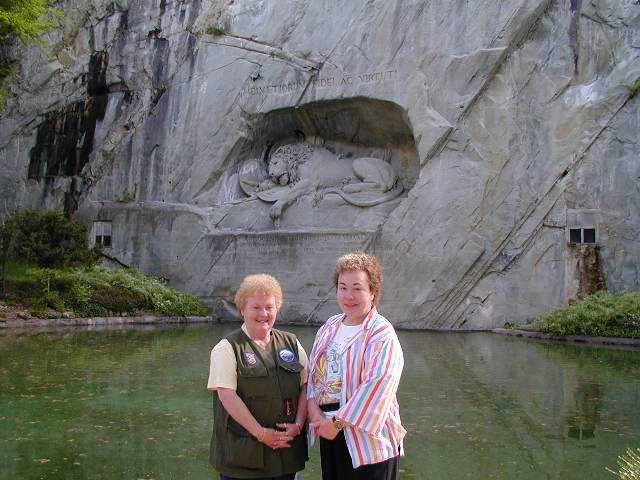
GRAND TOUR OF EUROPE:
By Dixie Hughes
Part 1
A hundred years ago the rich people sent their older teenagers on a "grand tour" to finish their education. It usually took 6 months to a year because the transportation at that time was so slow. Well, The Grand Tour is now the province of middle aged retirees – and much faster. We may have seen the same things they saw one or two hundred years ago – because most of the tourist spots in Europe are between 2000-500 years old – but we did it from a luxury bus or streamlined trains, and stayed in modern hotels. It’s a blast – such fun to see things that you’ve read or heard about for years – and be able to see something else the next day. I feel thoroughly "finished"!
Anyway, my friend Lois and I left on April 24 and flew home May 18 – 25 days and 10 countries (almost 5000 miles) later. We landed in London, took Eurostar (chunnel) to Brussels, then bus to Amsterdam, Cologne, Darmstaad, Heidelberg, Lucerne, Liechtenstein, Munich, Salzburg, Vienna, Budapest, Venice, Rome, Assisi, Florence, Pisa, Monaco, Nice, Avignon, got back on the train to Paris, from which we flew home. Whew!

In Lucerne, Switzerland, Lois and I pose in front of the famous Lion Memorial
There’s no way I could tell you ALL about this trip, but I would like to tell/show you some of the highpoints (thanks to Dad’s new digital camera).
Our first stop, in London, lasted three nights so we had time to see some of the things I missed on last fall’s trip. Windsor Castle, which was built by William the Conqueror as part of his fortification around London, has been and still is the favored residence of the British kings and queens. Windsor is twenty miles from London and has been inhabited by the monarchy for 1000 years. Queen Elizabeth was there when we toured –according to the flag flying from the tower – but of course, no one "tours" the private residences. Queen Victoria had the train station built there, even though her husband wouldn’t ride the train with her; he thought they were too fast. Henry VIII is buried there at Saint George’s Chapel. His tomb was so big they put a couple other people in with him (his last wife, some royal babies, and Charles I when Cromwell took over). They even have a special section at Windsor for Queen Mary’s doll house – well worth the wait to see it.
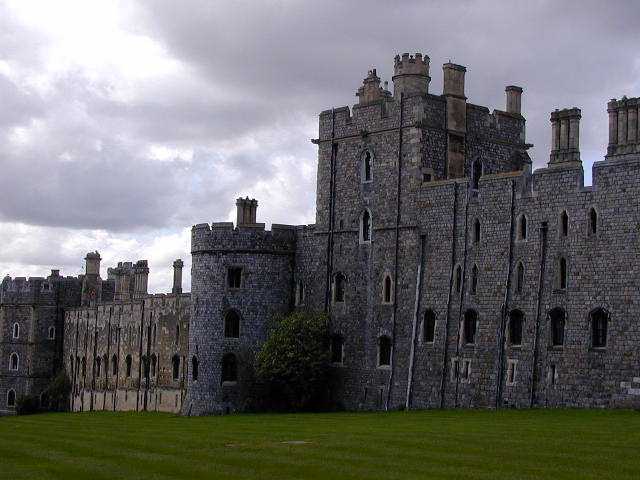
Winsor Castle, Home for the Royal Family
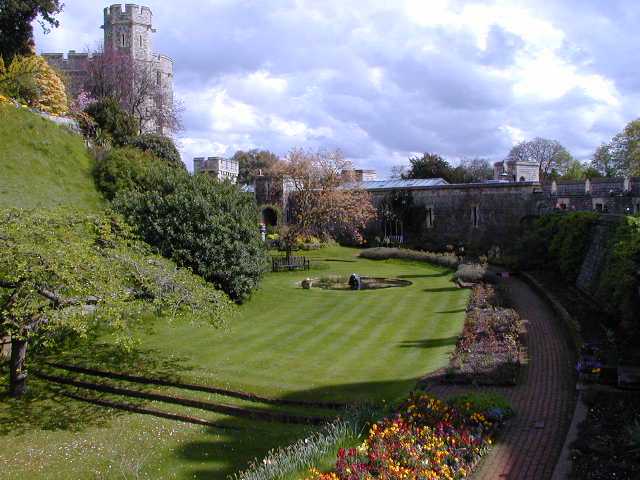
It was built in "mot & bailey" style, which means it is on a hill (mot) with a moat around it. William tried to keep water in the moat for 40 years but finally gave up. The rocks are too porous; since then it’s become a lovely garden area.
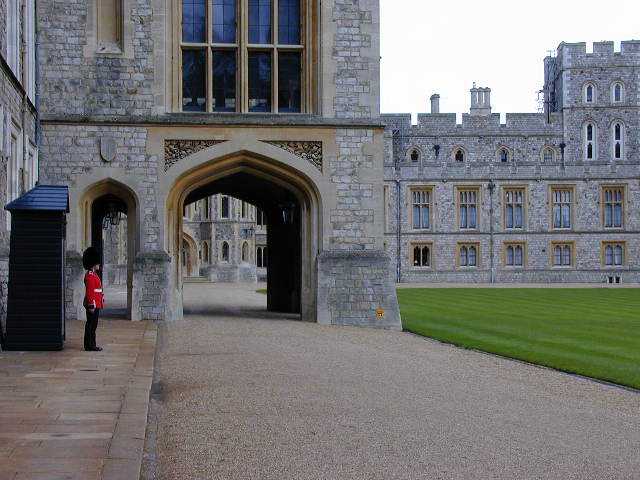
Windsor is twenty miles from London and has been inhabited by the monarchy for 1000 years. Queen Elizabeth was there when we toured –according to the flag flying from the tower – but of course, no one "tours" the private residences. Queen Victoria had the train station built there, even though her husband wouldn’t ride the train with her; he thought they were too fast. Henry VIII is buried there at Saint George’s Chapel. His tomb was so big they put a couple other people in with him (his last wife, some royal babies, and Charles I when Cromwell took over). They even have a special section at Windsor for Queen Mary’s doll house – well worth the wait to see it.
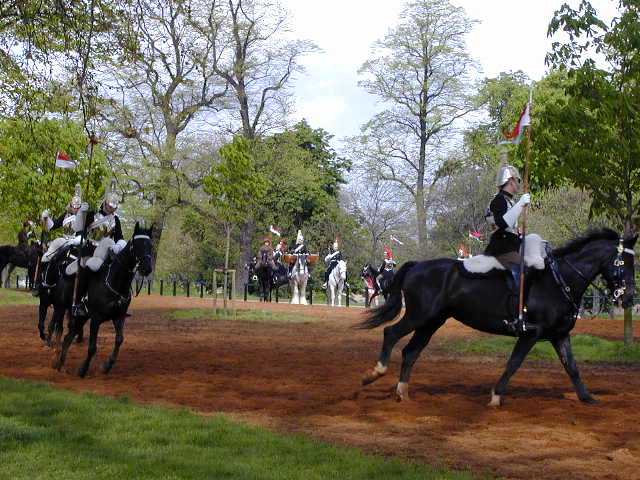
The next day we walked across Hyde Park to get to Harrods – our hotel was at Marble Arch on one corner of the park. On the way we noticed some horses, buglers, and drums doing strange things over at a large open area. Naturally we had to go look. Turned out it was the "Queen’s Guard" (not to be confused with Buckingham Palace guards) who were practicing maneuvers for the queen’s birthday celebration coming up this summer. They were really impressive with their black horses, shiny breastplates and tasseled helmets. The huge Percheron (with fluffy feet) had two big kettledrums his rider hit; the reins were connected to the rider’s boots!
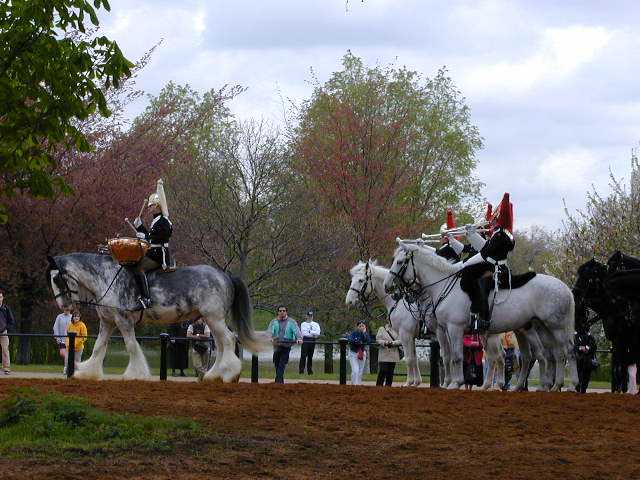
Horses, Riders, and Tourists enjoy the performance
After enjoying London for three days, we caught the train for Brussels, which we hardly saw, since our bus picked us up at the depot and took us to Amsterdam for the next two nights. We traveled over very flat land with lots of cows, and of course, the windmills. Holland only has 650 windmills left (protected) because other power sources have become more convenient.
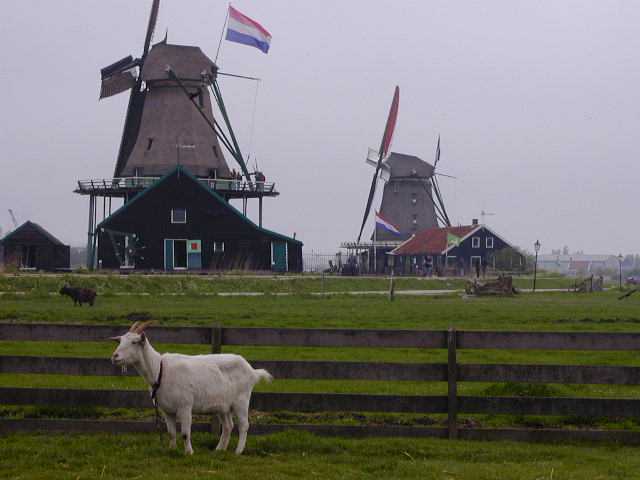
This must be Holland!
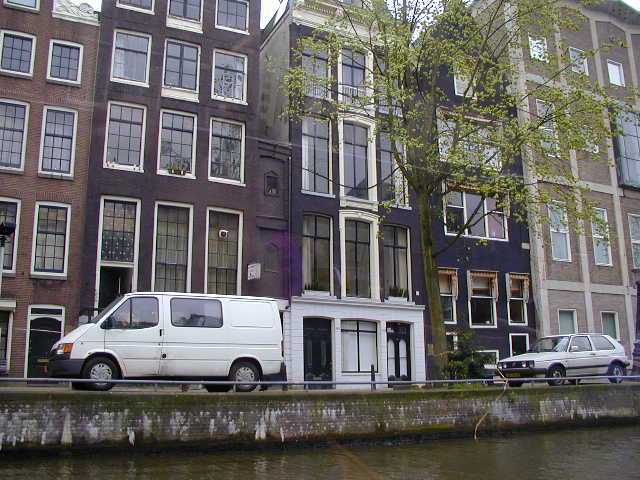
Amsterdam is often called the Venice of the North because of all the canals, so we toured on a boat. The houses along the canals, built on pilings sunk into the wet soil, are very tall, deep and narrow because they were taxed on frontage measurement. Many have started to lean – dominoes come to mind. We went to a diamond factory and a cheese farm – fascinating processes to watch at both.
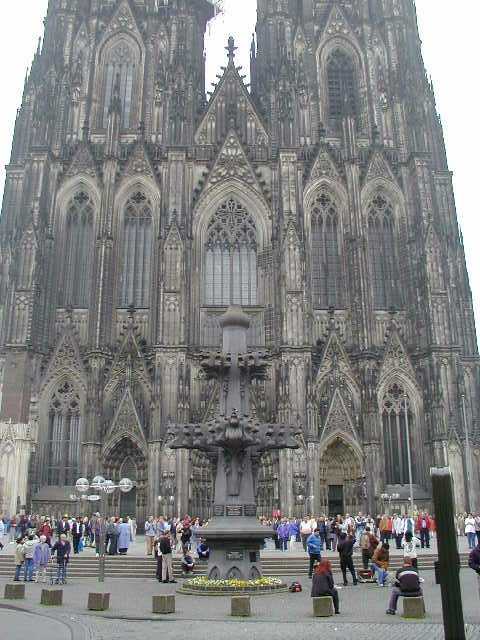
Our next stop was at Cologne, Germany which is one of the manufacturing centers. Because of this, Cologne was heavily bombed during WWII and the cathedral was about the only thing left standing afterwards – mainly because the pilots used it as a navigation marker, so they tried not to bomb there. One corner was hit but has been replaced.
We then traveled south along the Rhine river enjoying the view of boats/barges, vineyards, and castles (most of which have been converted into hotels and restaurants for tourists)
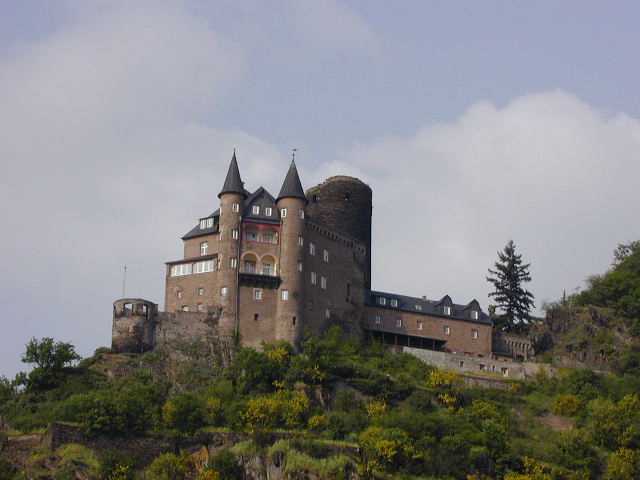
Castles in the Sky
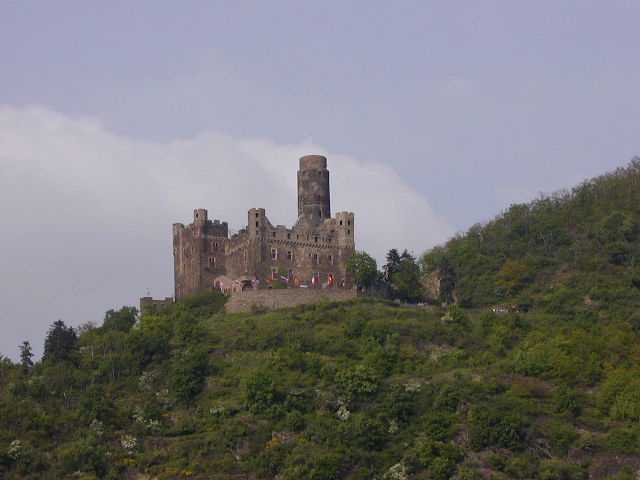
Now they are restaurants and tourist hangouts
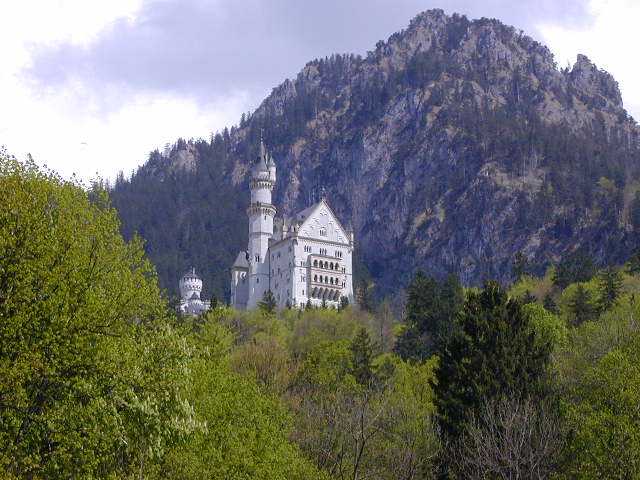
What A View!
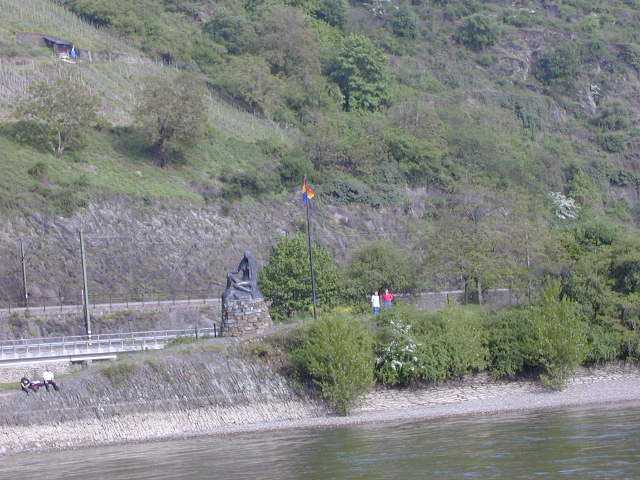
A famous statue is on an island of the Rhine to commemorate the Legend of Lorilei who supposedly stood (naked) on the hill and many river captains crashed on the rocks below.
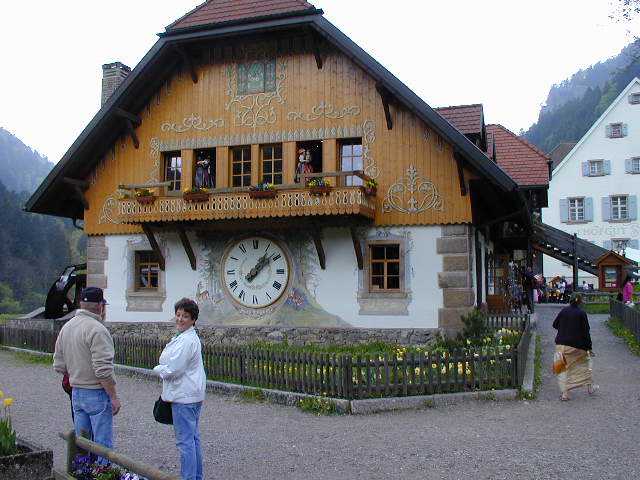
One BIG Cuckoo Clock
After traveling through the Black Forest we arrived at a cute lunch stop in a cookoo clock factory. They even made the side of the building into one big clock with dancing figures.
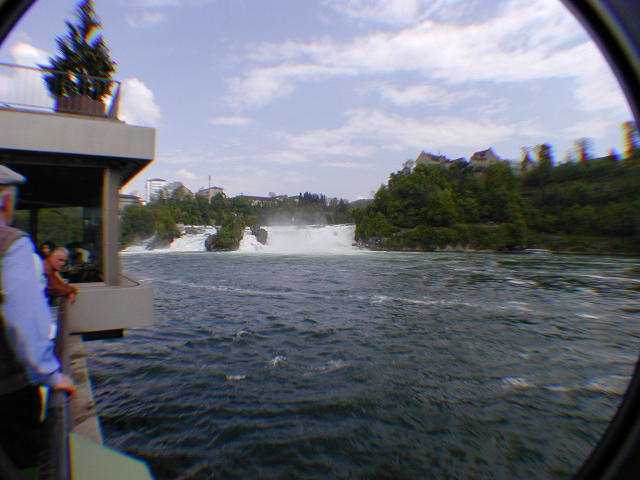
The Rhinefall is the widest waterfall in Europe and is very impressive though not too tall. Little boats take people out to the island in the middle of the falls and they can climb it to the top.
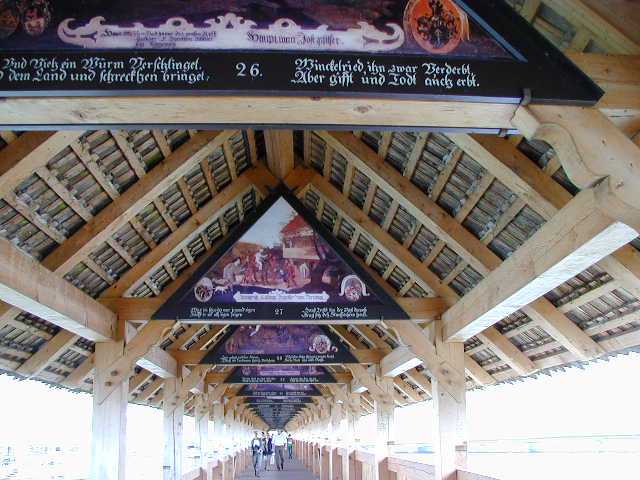
The next two nights were spent on beautiful Lake Lucerne with the Alps all around. It’s a smaller city with a lot of history. They have a long, covered wooden bridge to walk along from one side of the lake to the other with triangular paintings on each beam of some of their historical highpoints. It’s fascinating. Lucerne is also famous for the "Lion Memorial" which was carved into the granite cliff to commemorate the only Swiss soldiers who died in battle. They were protecting Louis XVII when the French revolution overwhelmed them all.
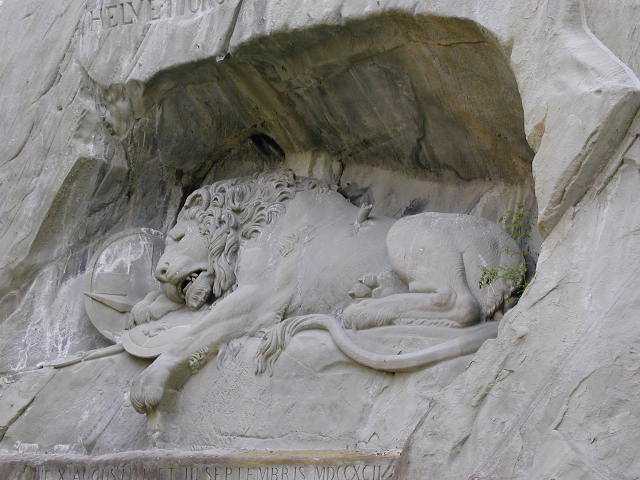
Famous "Lion Memorial' for Swiss soldiers who died in battle
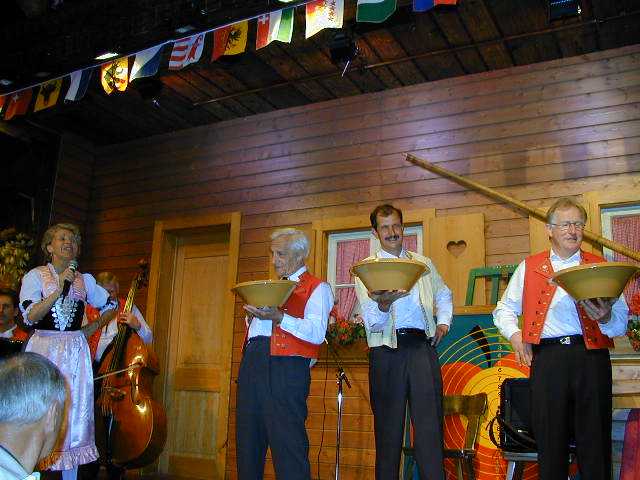
The highlight of our Lucerne stay was a "real Swiss" dinner and folk show, complete with yodeling and alpenhorns. It was great.
Our next short stop was at Liechtenstein, after a scenic drive through alpine country – many steep roofed houses, waterfalls, and tunnels. The Europeans seem to go through mountains rather than over them; lots of tunnels.
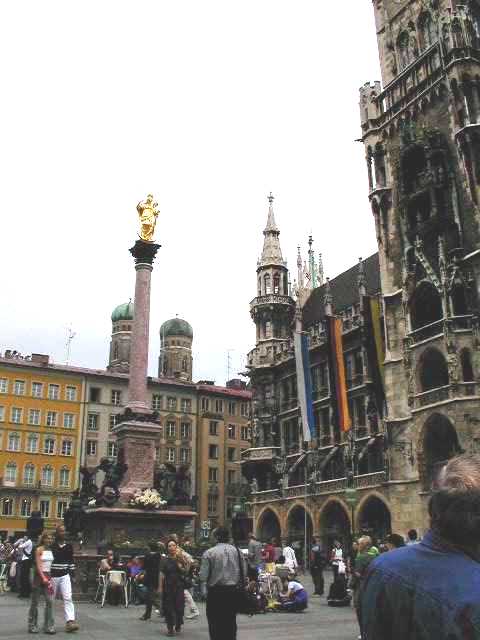
Waiting on the Plaza for Glockenschpiel
We finally arrived in Munich in time to watch the 5:00 performance of the Glockenschpiel on the famous Marienplatz. It only "performs" once or twice a day – with characters going around on three levels and a synthetic joust. Quite impressive. Since Munich was also the birthplace of the Nazi party in the ‘30s, we also saw many places famous for their more recent history.
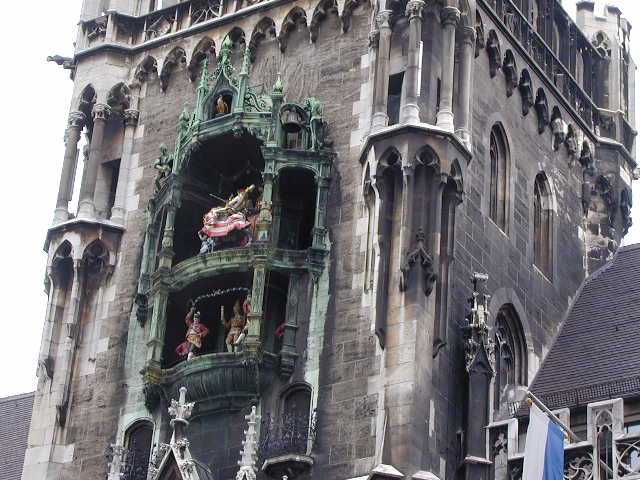
Only one night in Munich and then we’re on the bus to Salzburg, home of Mozart and heart of "Sound of Music" country – it looks just like the movie. We see the VonTrapp family mansion and the church where they were married. We also see the large palace used by Himler as SS headquarters during the war.
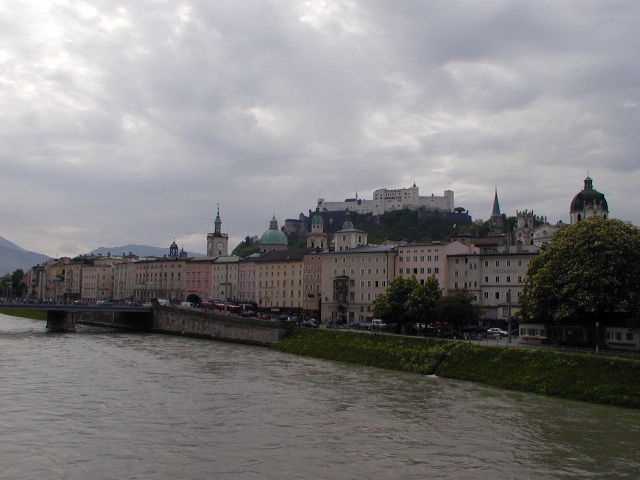
The castle on top of the hill served as Heinrich Himler's German military headquarters in World War II
We finally arrive for a three-night stay in Vienna – it’s nice to unpack and wash out a few things. Vienna seems to be in flatter country along the River Vin; it has been thriving city for many centuries and former capital of the Austrian Empire.
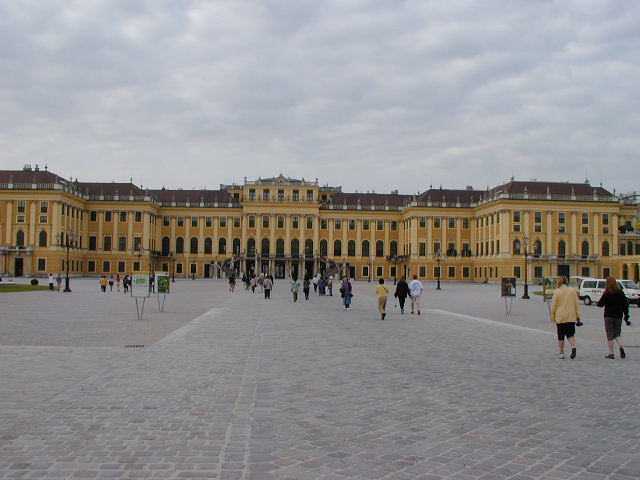
The Hapsburgs ruled from Vienna; we tour Maria Theresa’s famous Schonbraunn Palace. She was the first woman ruler and highly successful for forty years, in spite of (or because of?) having 16 children.
Vienna’s musical tradition is on display everywhere – Shubert and Strauss were the only ones born and raised here, but Haydn, Mozart and Beethovan were all here at various times, plus the students and budding musicians they attracted. There’s even a gold statue of Strauss playing the violin in the park and copies of it all over town.
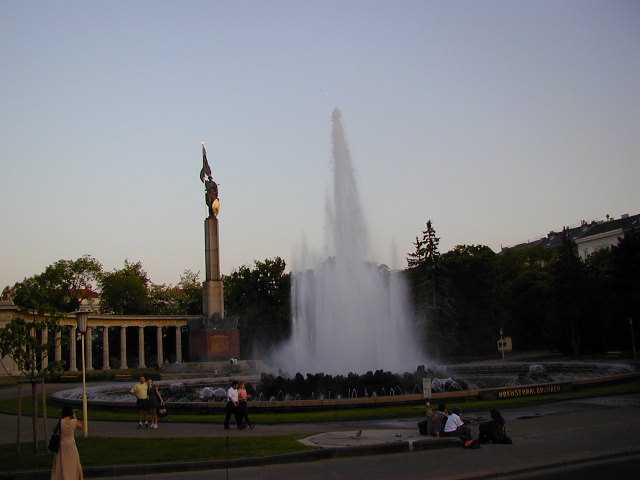
One of the more interesting things was the statue of a Russian soldier in the park. When the Russians occupied Vienna after WWII they erected this statue commemorating Vienna’s "liberation". As part of the agreement to get the Russians to end the occupation in 1955, the Viennese had to agree to leave the statue up. Which they did, but they built a huge fountain in front of it so it can hardly be seen.
We took a side trip to Budapest, Hungary, the next day – three hours from Vienna. This involved passing through the most strict border crossing on the whole trip (the only place that stamped our passports) with stern faced military types. I guess the iron curtain influence is taking awhile to wear off.
Budapest is a beautiful city, a union of the hilly city of Buda with the flat area called Pest on the other side of the Danube River. There are now seven bridges linking the two and many friendly people.
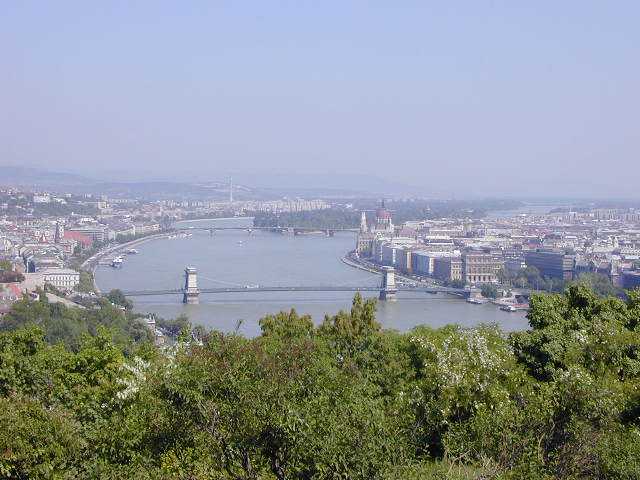
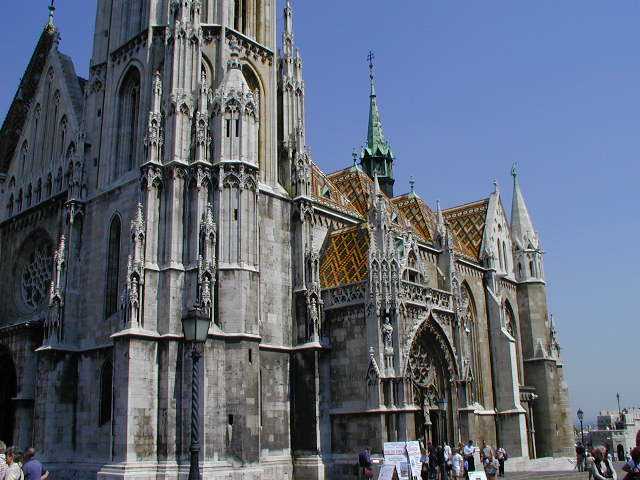
The various churches are impressive in the sunshine because of their colorful ceramic tile roofs.
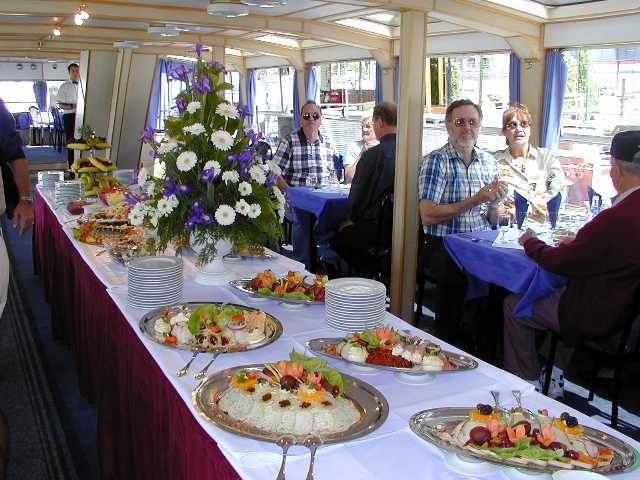
We took a cruise on the Danube for a real Hungarian lunch – way too much food – and thoroughly enjoyed our day.
We left Vienna and traveled through the steep and craggy Dolomite mountains of northern Italy to Venice. Venice is a city built on islands in the Adriatic Sea – originally to discourage robbers and thieves because Venice has always been an area of successful business. I had never realized all those canals were salt water. Anyway, there are now hundreds of walking bridges over the many canals – no cars = no pollution.
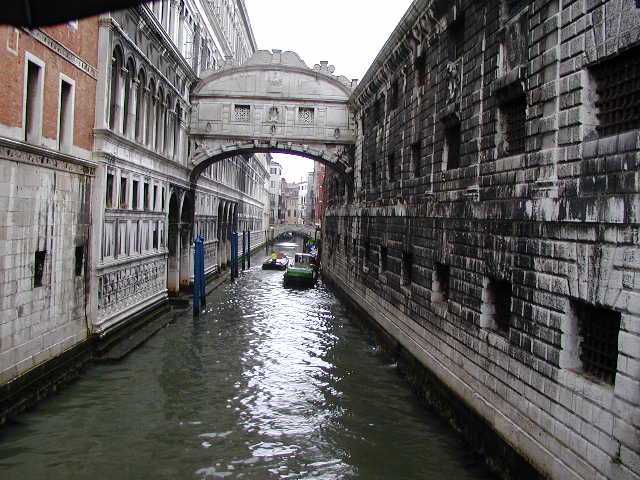
Venice the Queen of the Adriatic is actually a collection of 117 islands, 117 canals, 401 bridges, and a very fashionable sandbar called the Lido. In other words, there's nothing quite like the magnificent Venice.
We did the usual tourist things: saw St. Mark’s cathedral and watched the talented glass workers in a real Venician glass factory .
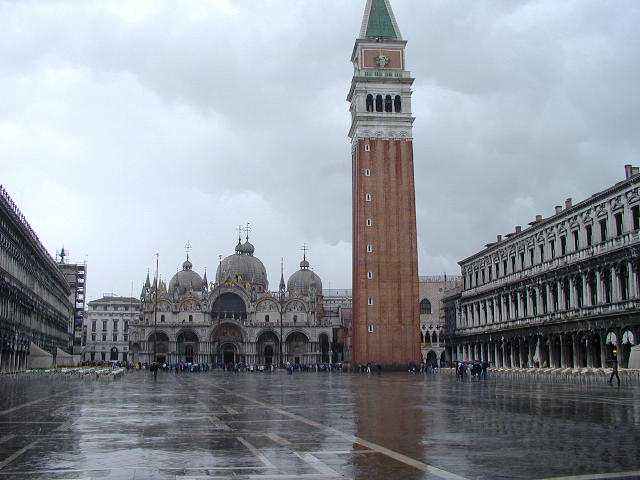
St. Marks Cathedral in Venice and bell tower (originally a lighthouse)
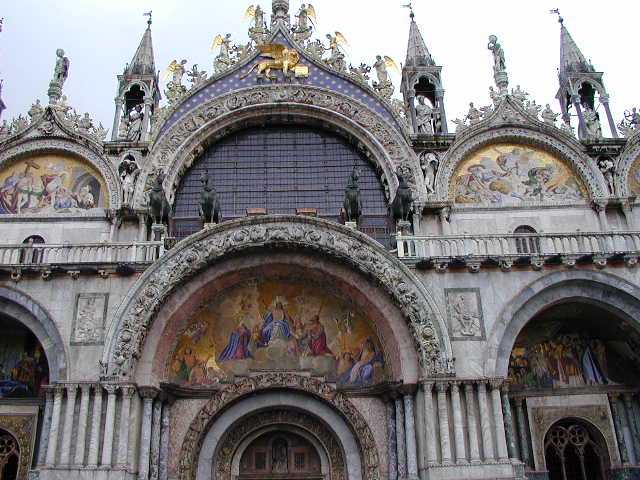
St. Mark's entryway with gold mosaic tiles
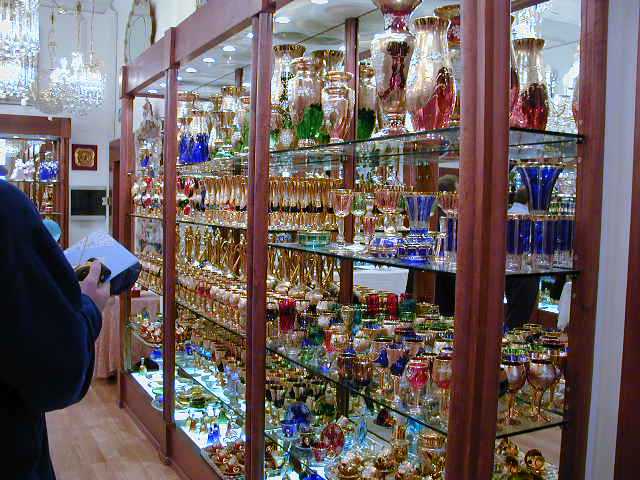
Venetian Glass Works
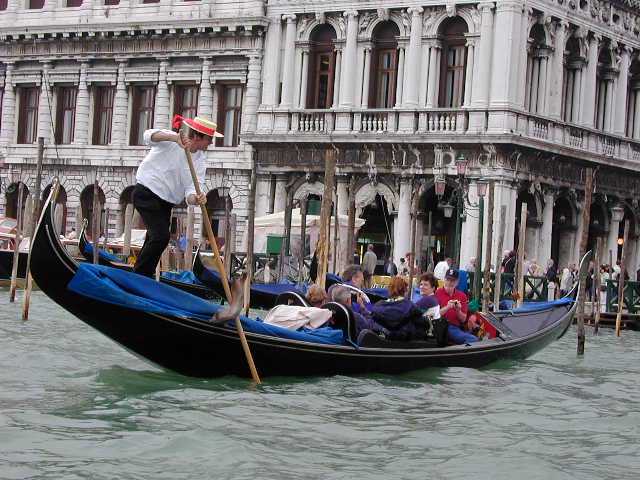
Luckily it stopped raining long enough for our gondola ride – can’t do Venice without it.